Hyperthyroidism
What is Hyperthyroidism?
Hyperthyroidism is a condition in which your thyroid produces and releases more hormones than your body needs. This is also called an overactive thyroid. Triiodothyronine (T3) and thyroxine are the primary hormones produced by your thyroid (T4).
The thyroid gland is a small in size, butterfly-shaped gland situated in the front of your neck. Thyroid hormones regulate how the body uses energy, so they affect nearly every organ in your body, including the rate at which your heart beats. Many of your body’s functions accelerate when you have too much thyroid hormone.
Epidemiology
The prevalence of hyperthyroidism varies according to the ethnic group, while in Europe, the frequency is involved by dietary intake of Iodine, and some patients are due to an autoimmune condition.
Subclinical hyperthyroidism happens more in females older than 65 than in males
Overt hyperthyroidism rates are 0.4 per 1000 females and 0.1 per 1000 males and differ with age.
Females between the ages of 20-40 are more prone to developing this condition.
What does my thyroid do?
Found at the front of your neck, the thyroid gland is butterfly-shaped. Glands are organs that can be located all over your body. Some of your glands produce and release hormones and substances that assist your body’s function and growth. The thyroid gland plays a big function in many of your body’s main roles, involving:
Maintaining your body temperature.
Maintaining your heart rate.
Maintaining your metabolism (the process that transforms the food you place in your body into energy that assists your body’s function).
When your thyroid gland is working accurately, your body is in balance, and all of your systems function correctly. If your thyroid stops functioning the way it’s suggested to create too much or too small thyroid hormones it can affect your full body.
Symptoms of Hyperthyroidism
When a patient’s thyroid gland is overactive, the patient’s body’s functions speed up. This acceleration can get regarding a constellation of high thyroid signs and symptoms, involving:
- anxiety or nervousness
- rapid heartbeat
- hand tremors
- extreme sweating
- weight loss
- a problem with sleeping (insomnia)
- changes in appetite
Appetite Changes
While more elevated levels of TSH are noted to lead to a reduction in food input, T3 has been shown to do only the opposite. So, relying on which hormone your thyroid gland determines to overproduce, you could see yourself hungry all the time or sense like you’re losing your interest in food completely.
Emotional Extremes
Anxiety, mood swings, irritability, and nervousness are a few of the symptoms of emotional overactivity you might sense due to an overactive thyroid gland.
Fatigue or Muscle Weakness
These symptoms are frequently connected to insomnia that can accompany hyperthyroidism, as an outcome of your nightly struggle to bring in the precious sleep your body requirements, you end up feeling exhausted or weak during the day.
Fertility and Menstruation Issues
High thyroid hormone levels can throw your further hormone levels out of whack, disrupting your capability to conceive. Prepubescent girls with hyperthyroidism might feel delayed menstruation, while menstruating females may feel reduced menstrual flow (hypomenorrhea) as well as skipped periods (amenorrhea).
Frequent Bowel Movements
An overactive thyroid even interferes with most of your gastrointestinal tract, resulting in up to a quarter of persons creating repeated visits to the bathroom and feeling routine bouts of diarrhea.
Hand Tremors and Shakiness
If you’re seeing any erratic, involuntary motions in your hands or arms, it’s indeed a sign to obtain tested. Hyperthyroidism is connected to motion disorders and can even worsen the tremors associated with the neurodegenerative condition Parkinson’s disease if left to progress.
Heart Palpitations or Irregular Heartbeat
Your thyroid hormone directly involves your heart. So, when hyperthyroidism raises your heart rate, you can feel palpitations and abnormal heart rhythms also called atrial fibrillation. Unnecessary to say, anything that places your heart at risk should be taken extremely and addressed instantly.
Heat Intolerance and Excessive Sweating
Your thyroid gland controls your body temperature. When your thyroid gland produces more thyroid hormones than your body’s requirements, your temperature is also probable to increase. As an outcome, you might see yourself additional sensitive to heat and perspiring 24/7.
Increased Blood Sugar
Thyroid condition has been connected to diabetes, and diabetic persons who produce hyperthyroidism have a higher risk of difficulties. Hyperthyroidism runs up the rate that insulin is metabolized and raises the production and absorption of glucose. This can result in raised insulin resistance, which is additionally difficult if you’re diabetic.
Insomnia
Since hyperthyroidism overstimulates the nervous system, this can make it hard for you to acquire a quality night’s sleep. In addition to having a hard time falling asleep, you might also feel night sweats and wake up multiple times after you move to a bed.
Skin, Hair, and Nail Changes
You might feel thinning hair and skin, redness in your face, elbows, and palms, rashes, and hives, Plummer’s nails (where the nail body detaches from the nail bed), or bringing gray hair at a young age.
Nausea and Vomiting
The connection between these symptoms and an overactive thyroid has not been widely noted, but new analysis indicates that they can be primary indicators of the disease.
Respiratory Problems
Several breathing and/or lung problems can result from hyperthyroidism, involving:
Dyspnea (hard or labored breathing)
Hyperventilation (deeper and more fast breathing)
Pulmonary arterial hypertension (high blood pressure in the blood vessel that brings blood from the heart to the lungs)
Sudden Paralysis
Known as thyrotoxic periodic paralysis, this rather irregular symptom includes extreme muscle weakness and only happens in a patient with high hormone levels. It predominantly involves Asian and Latinx males.
Swollen Base of the Neck and Thyroid
Also known as a goiter, an enlarged thyroid gland is generally painless but can generate a cough or, in more extreme cases, make it hard for you to swallow or breathe.
Weight Fluctuations
Hyperthyroidism is notoriously connected with weight loss, and for good cause: It kicks your metabolism into increased gear, frequently making it hard, if not impossible, to place on weight even with raised food input. Although less familiar, it is also likely for your oversized appetite and resulting food intake to rise to a point where they overtake the gain in your metabolic rate, resulting in weight gain.
Causes of Hyperthyroidism
The thyroid gland conducts the larynx and trachea
Hyperthyroidism can be generated by several medical diseases that involve the thyroid gland. The thyroid is a little, butterfly-shaped gland at the bottom of the neck. It has a big effect on the body. Every factor of metabolism is regulated by hormones that the thyroid gland makes.
The thyroid gland creates two main hormones: thyroxine (T-4) and triiodothyronine (T-3). These hormones involve every cell in the body. They support the rate at which the body utilizes fats and carbohydrates. They assist in managing body temperature. They affect heart rate. And they assist control how much protein the body creates.
Hyperthyroidism occurs when the thyroid gland places too much of those thyroid hormones into the bloodstream. Diseases that can lead to hyperthyroidism contain:
Graves’ disease. Graves’ condition is an autoimmune condition that induces the immune system to strike the thyroid gland. That stimulates the thyroid to make too much thyroid hormone. Graves’ condition is the most familiar reason for hyperthyroidism.
Overactive thyroid nodules. This disease also is known as toxic adenoma, toxic multinodular goiter, and Plummer disease. This state of hyperthyroidism occurs when a thyroid adenoma creates too much thyroid hormone. An adenoma is a portion of the gland that is walled off from the remains of the gland. It forms noncancerous lumps that can create a thyroid bigger than normal.
Thyroiditis. This disease occurs when the thyroid gland evolves inflamed. In some patients, it’s due to an autoimmune condition. In others, the cause for it is unclear. The inflammation can generate excess thyroid hormone kept in the thyroid gland to leak into the bloodstream and generate symptoms of hyperthyroidism.
Risk factors
To summarize, the primary risk factors for hyperthyroidism are:
Sex. Women are much more probable to have hyperthyroidism than men. Specialists think this may have to accomplish with hormones.
Pregnancy. Pregnancy can produce hyperthyroidism in some patients, which can generate difficulties for both the parent and fetus.
Age. You’re believed at higher risk for hyperthyroidism as an older grown-up, particularly after age 60.
Genetics. A family record of hyperthyroidism generally suggests a raised likelihood of creating the disease.
Iodine exposure. You may bring too much iodine from specific drugs or foods.
Having another health disease. Patients with type 1 diabetes, primary adrenal insufficiency, or pernicious anemia are thought more at risk.
Lifestyle is an essential factor in lowering your risk factors for hyperthyroidism. This contains consuming a balanced diet, bringing nutritional supplements if required, and obtaining sufficient physical activity during the week. Function with your doctor to make a schedule with individualized purposes.
Avoid or seek to quit smoking, as this has been seen to raise your likelihood of Graves condition in certain. A large-scale 2007 analysis from Norway discovered smokers had higher levels of thyroid hormone than nonsmokers. The majority of hyperthyroidism in females who presently smoked was about twice as high as in females who noted never smoking.
Differential diagnosis
- Congestive heart failure
- Coronary artery disease
- Sjogren’s syndrome
- Rheumatoid arthritis
- Psoriatic arthritis
- Chronic periarthritis
- Myasthenia gravis
Diagnosis
Your healthcare provider can analyze hyperthyroidism in several methods, involving:
A physical examination of your neck to notice if your thyroid is bigger than normal.
Blood examinations to look for increased levels of thyroid hormone in your body.
Imaging examinations to look at your thyroid.
Physical examination for analyzing hyperthyroidism
If you’re feeling symptoms of hyperthyroidism, your healthcare providers may inspect the following during a physical examination in their office:
Your thyroid: Your provider may slightly sense your thyroid via the outside of your neck to inspect if it’s broadened, bumpy, or tender.
Your eyes: Your provider may inspect your eyes for redness, swelling, bulging, and further signs of Graves’s eye condition.
Your heart: Your provider may use a stethoscope to hear your heart for a fast and/or uneven heartbeat.
Your hands: Your provider may have you extend your hands to see if you have a tremor. They may also examine for differences in your fingernails.
Your skin: Your provider may sense your skin to notice if it’s warm and moist.
Blood examinations for analyzing hyperthyroidism
Your healthcare provider may bring a blood sample to examine for increased levels of thyroid hormone. This is known as thyroid function testing. When you have hyperthyroidism, levels of the thyroid hormones T3 and T4 are beyond normal and thyroid-stimulating hormone (TSH) is inferior to usual.
Imaging Tests for diagnosing hyperthyroidism
Bringing a closer look at your thyroid can assist your provider to analyze hyperthyroidism and the possible reason for it. Imaging examinations your provider could use to inspect your thyroid contain:
Radioactive iodine uptake (RAIU) test: For this examination, you’ll bring a small, secure dose of radioactive iodine (also known as a radiotracer) by mouth to notice how much of it your thyroid absorbs. After a specific quantity of time generally at six and 24 hours later your healthcare provider will examine your neck with a machine known as a gamma probe to notice how much of the radioactive iodine your thyroid has soaked. If your thyroid has soaked a lot of the radioactive iodine, it suggests that your thyroid gland is making too much thyroxine (T4). If this is the issue, you most probably have Graves’ disease or thyroid nodules.
Thyroid scan: This method is an extension of the RAIU, where in addition to estimating the absorbed quantity of radioactivity by your thyroid, you’ll lie on a table with your head tilted back while a certain camera (gamma camera) brings several pictures of your thyroid. The radioactive material creates all or specific regions of your thyroid to appear bright on the screen. Your provider may use a thyroid scan to examine for lumps or nodules on your inflammation, thyroid, goiter, swelling, or thyroid cancer.
Thyroid ultrasound: An ultrasound utilizes high-frequency sound waves to make pictures of your thyroid. It’s a non-invasive method that permits your provider to examine your thyroid on a screen. Your provider may use this examination to examine for nodules on your thyroid.
Treatment of Hyperthyroidism
There are several therapies available for hyperthyroidism. The best method for you relies on your age and health. The underlying reason for hyperthyroidism and how extreme it creates a difference too. Your personal choice also should be regarded as you and your health care provider determine a treatment schedule. Treatment may contain:
Anti-thyroid medicine. These drugs gradually reduce symptoms of hyperthyroidism by controlling the thyroid gland from producing too many hormones. Anti-thyroid drugs contain methimazole and propylthiouracil. Symptoms generally start to enhance within several weeks to months.
Treatment with anti-thyroid drugs generally stays 12 to 18 months. After that, the dose may be gradually reduced or stopped if symptoms go out and if blood examination outcomes show that thyroid hormone levels have returned to the normal range. For some patient, anti-thyroid drug places hyperthyroidism into long-term remission. But the further patient may see that hyperthyroidism arrives back after this therapy.
Although infrequent, severe liver damage can occur with both anti-thyroid drugs. But because propylthiouracil has generated many more possibilities of liver damage, it’s commonly used only when a patient can’t carry methimazole. A small number of patients who are allergic to these drugs may create hives, skin rashes, fever, or joint pain. They also can enhance the risk of infection.
Beta-blockers. These drugs don’t involve thyroid hormone levels. But they can reduce symptoms of hyperthyroidism, like a rapid heart rate, tremors, and heart palpitations. Occasionally, healthcare providers define them to reduce symptoms until thyroid hormones are nearer to a standard level. These drugs commonly aren’t suggested for a patient who has asthma. Side effects may contain fatigue and sexual issues.
Radioiodine therapy. The thyroid gland brings up radioiodine. This therapy generates the gland to shrink. This drug is carried by mouth. With this therapy, symptoms generally decrease within several months. This treatment generally generates thyroid activity to slow sufficiently to create the thyroid gland underactive. That disease is hypothyroidism. Because of that, over time, you may require to bring a drug to substitute thyroid hormones.
Thyroidectomy. This is surgery to remove a portion of or all of the thyroid gland. It is not used frequently to manage hyperthyroidism. But it may be a possibility for a patient who is pregnant. It also may be an option for those who can’t carry the anti-thyroid drug and don’t want to or can’t bring radioiodine therapy.
The risks of this surgery contain injury to the vocal cords and parathyroid glands. The parathyroid glands are four small glands on the back of the thyroid. They assist to maintain the level of calcium in the blood.
Patients who have a thyroidectomy or radioiodine treatment require lifelong treatment with the drug levothyroxine (Synthroid, Levoxyl, and others). It delivers the body with thyroid hormones. If the parathyroid glands are extracted during surgery, a drug also is required to maintain blood calcium in a healthy range.
Thyroid eye disease
If you have a thyroid eye condition, you may be capable to control mild symptoms with self-care steps, like artificial tear drops and lubricating eye gels. Avoiding wind and bright lights can assist also.
More severe symptoms may require treatment with a medicine known as corticosteroids, like methylprednisolone or prednisone. They can reduce swelling after the eyeballs. The drug teprotumumab (Tepezza) also may be used to regulate moderate to extreme symptoms. If those drugs don’t relieve symptoms, further drugs are occasionally used to manage thyroid eye conditions. They contain rituximab (Rituxan), tocilizumab (Actemra), and mycophenolate mofetil (Cellcept).
In some patients, surgery may be required to manage thyroid eye disease, involving:
Orbital decompression surgery. In this surgery, the bone between the eye socket and the sinuses is dismissed. This surgery can enhance vision. It also provides the eyes more room, so they can go back to their regular position. There is a risk of difficulties with this surgery. If you have double vision before the surgery, it may not go out afterward. Some patients create double vision after the surgery.
Eye muscle surgery. Occasionally scar tissue from thyroid eye conditions can generate one or more eye muscles to be also short. This drags the eyes out of alignment, generating double vision. Eye muscle surgery may fix double vision by trimming the muscle from the eyeball and connecting it also farther back.
Physiotherapy treatment in Hyperthyroidism
The subsequent yoga poses concentrate on promoting the throat. They are believed to enhance circulation, as well as stretch and strengthen the neck where the thyroid is found.
It is essential to only remain in yoga poses for as long as feels relaxed. Beginners can attempt one or two poses and make this per time they practice.
Per the below yoga poses are comfortable to attempt at home with a yoga mat.
Supported shoulder stand
The supported shoulder stand pose includes being upside down, which is known in yoga as an inversion.
Inversions assist to raised blood flow to the throat. Yoga investigators think this assists to produce the thyroid.
The Sanskrit word for this pose is Sarvangasana.
To do a supported shoulder stand, a patient should:
lie down flat on the back in a supine position
put a folded towel or covering under the shoulders to help them
get the shoulders to the border of the towel while relaxing the head on the carpet
put the arms on either side with palms facing down
press arms and back firmly into the bottom
breathe in and raise your legs at a right angle
breathe out and raise your legs, moving up onto the shoulders
Press hands into the lower back to help the hips
maintain the stomach dragged in, so the core is strong
maintain the body and legs in an erect line up from the shoulders
maintain the chin tucked into the chest
breathe greatly three times
decline the legs back down gradually, maintaining the core committed

Plow Pose
The Plow Pose is also thought to facilitate the thyroid.
The Sanskrit word for this pose is Halasana.
To accomplish the Plow Pose, a patient should start in the same manner as for a shoulder stand.
Instead of maintaining the legs up in an erect line from the shoulders, they should:
get the legs right over and after their head
relax their toes on the bottom behind their head
maintain their lower back helped with their hands throughout
breathe greatly three times
obtain the legs back above the head
gradually reduce the legs back to the bottom, maintaining the core engaged
The Plow is a secure pose, but it may sense uncomfortable for a patient who is overweight or female with bigger breasts.
If a patient feels such as the Plow Pose creates breathing hard, they should gradually come out of the position.

Fish Pose
The Fish Pose is an amazing pose to do after a shoulder stand or Plow, as it extends the body in the opposite direction. In yoga, the patient is guided to this as a counter pose.
The Sanskrit word for this pose is Matsyasana.
The Fish Pose is straightforward to conduct and is ideal for beginners.
To do the Fish Pose, a patient should:
sit down with the legs lengthened in front of them
put their hands on the carpet after them with their fingers folded under their buttocks
decline the elbows to the carpet and lean backward
maintain the shoulders with the elbows
slightly lower the head back as far as it senses relaxed, with the eventual purpose of touching the crown of the head on the carpet
maintain the chest up and open, picturing a string dragging it up to the sky
breathe greatly three times
gradually raise the head and free the arms to come out of the position
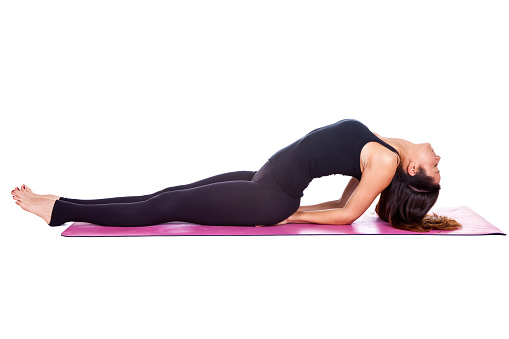
Bridge Pose
The Bridge Pose is useful for strengthening the back. It may also assist to encourage thyroid health.
The Sanskrit word for this pose is Setu Bandha Sarvangasana.
To do the Bridge Pose, a patient should:
lie on the carpet with their back on the bottom
pull the feet inwards towards their hips
maintain the feet and knees in sequence with the hips
with arms by the sides of the body, push the palms into the bottom
raise the hips to the sky, picturing a string dragging the hips upward
if this is hard, placed the palms on the lower back for asset
crease the chin into the chest
breathe greatly three times
gradually lower the hips to arrive out of the position

Cobra Pose
The Cobra Pose slightly promotes the throat and thyroid.
The Sanskrit word for this pose is Bhujangasana.
To do this pose, a patient should:
lie down on their stomach on the carpet
put the palms on the carpet under the shoulders
Press the elbows into their sides
Push the palms into the carpet
raise the head until the chest lifts off the carpet and the back is arched
lower the head back toward the base of this sense of comfortable
breathe greatly three times
gradually lower chest and head back down to the carpet

Boat Pose
The Boat Pose is useful for strengthening the core. It also facilitates the throat and may be useful for the thyroid.
The Sanskrit word for this pose is Navasana.
To do this pose, a patient should:
sit on the bottom with the legs out in front
put the hands on the carpet, palms down, on either side of the legs
gradually lean back, maintaining the core vigorous, the chin creased in, and the back erect
curving the knees, raise the feet off the bottom
if likely expand the legs and point the feet, so the legs and body create a V-shape
lift the arms, so they are in sequence with the shoulders
palms should face per other, with fingers stretched
breathe greatly three to five times
get the arms and legs down gradually, clutching the legs and lowering the head before releasing

Upward Bow Pose
The Upward Bow Pose, which is occasionally guided to as the Wheel Pose, delivers power by stretching the chest and lungs.
The Upward Bow also encourages the thyroid and pituitary glands and strengthens the legs, arms, and spine.
The Sanskrit word for this pose is Urdhva Dhanurasana.
To do this pose, a patient should:
lie down flat on the back in a supine position, flexing the knees and obtaining them close to the body
put the hands on the carpet after the head, confirming that the fingers are indicating toward the shoulders and the elbows point upward
Push the feet into the carpet and exhale while raising the tailbone and buttocks
provide the thighs and inner feet are similarity
Push into the feet and hands and raise onto the crown of the head
push further into the feet and hands while exhaling, then raise the head fully off of the bottom until the arms are straight
extend the shoulder edges and permit the head to hang loosely
maintain the pose for 5-10 seconds while breathing greatly
gradually free from the pose, flexing the arms and permitting the tailbone and buttocks to return to the carpet

Supported Headstand Pose
The Supported Headstand Pose is one of the numerous advanced yoga positions and works straight on the thyroid glands.
The pose assists blood flow to the heart as well as facilitates the brain’s pituitary and pineal glands, which assists to reduce stress.
The pose should not be tried without previous yoga experience and should be conducted under the supervision of a skilled teacher on the first try.
The Sanskrit word for this pose is Sirshasana,
To do this pose a patient should:
kneel forward so that the knees and forearms are on the carpet
lace the fingers together with elbows at shoulder width and push the inner wrists firmly into the carpet
place the crown of the head into the carpet and slightly press the back of the head up against the palms of the open hands
raise the knees from the carpet while inhaling
walk the feet nearer to the elbows and elevate the heels to create an inverted V shape
elevate the shoulder edges upward so the torso evolves lengthy and just stretched
raise both feet off of the carpet simultaneously while exhaling, it may be more comfortable to flex the knees a short during the ascent
rotate the upper thighs in while moving the heels toward the roof, tidying out the knees
confirm the weight is balanced between the forearms and resume raising the shoulders upward
when the legs are completely extended, press upward via the big toes
maintain the pose for 5-10 seconds (this can be raised by a different 5 seconds per time the pose is recounted in the future)
gradually get the feet back toward the carpet while exhaling, maintaining the shoulders moving upward until both feet get to the carpet

Yoga
Yoga is one of the most useful regimes to assist normalize hormone levels. Yoga is a modifiable activity and can be modified to one’s comfort. Yoga is also a slow-paced regime that is perfect for patient sorrowing from hyperthyroidism.
Weight training
Weight training is excellent for a patient with hyperthyroidism. As examined above, hyperthyroidism can generate weight loss. Weight training is a great method to rise muscle and is even slow-paced.
Stretching
Although stretching on its own may not be good for your daily workout needs, it is a great method to begin. Stretching assists in blood circulation and aids in the advance of hormone levels. It is even slow-paced which creates it ideal for a patient with hyperthyroidism.
In conclusion, the right diet and lifestyle modifications can assist to enhance your thyroid’s health and encourage its correct functioning. Exercising daily can assist normalize thyroid levels. Also, exercising enhances overall health which also promotes thyroid health.
Lifestyle and home remedies
Once you start therapy, symptoms of hyperthyroidism probably will bring better. Along with your therapy, your healthcare provider might recommend that you decrease iodine in your diet. It can create hyperthyroidism worse. Kelp, dulse, and further varieties of seaweed contain a lot of iodine. Cough syrup and multivitamins even may include iodine.
Graves’ disease
If you have Graves’ condition that generates eye or skin issues, bringing the subsequent steps may assist in the relief of symptoms:
Don’t smoke. Smoking has been connected to the growth of thyroid eye conditions. It also can create that situation worse. And smoking can generate symptoms to come back after therapy.
Maintain your eyes lubricated. Eye drops may assist to ease dryness and scratchiness. A cool compress also can deliver moisture. If your eyes don’t fully close, a lubricating gel at bedtime may assist to maintain the cornea from drying out. Some patients also tape their eyelids closed while they sleep.
Protect your eyes. Wear sunglasses to assist to defend your eyes from the sun and wind.
Keep your head up. Lifting the head of your bed may reduce swelling and reduce pressure on your eyes.
Use creams for swollen skin. Creams including hydrocortisone that you can purchase without a prescription (Cortizone 10, others) may assist to reduce swollen skin on the shins and feet. For assistance discovering these creams, ask a pharmacist.
Complications of Hyperthyroidism
Hyperthyroidism can conduct to subsequent difficulties.
Heart problems
Some of the most severe difficulties of hyperthyroidism include the heart, involving:
A heart rhythm condition known as atrial fibrillation raises the risk of stroke.
Congestive heart failure is a disease in which the heart can’t spread sufficiently blood to satisfy the body’s requirements.
Brittle bones
Untreated hyperthyroidism can conduct to fragile, brittle bones. This disease is known as osteoporosis. The power of bones relies, in the region, on the quantity of calcium and different minerals in them. Too much thyroid hormone creates it difficult for the body to bring calcium into bones.
Vision problems
Some patients with hyperthyroidism develop trouble known as thyroid eye conditions. It’s more familiar among patients who smoke. This disease involves the muscles and further tissues near the eyes.
Symptoms of thyroid eye condition contain:
- Bulging eyes.
- Gritty sensation in the eyes.
- Pressure or pain in the eyes.
- Puffy or retracted eyelids.
- Reddened or inflamed eyes.
- Light sensitivity.
- Double vision.
Eye issues that go untreated may generate vision loss.
Discolored, swollen skin
In rare circumstances, a patient with Graves’ condition creates Graves’ dermopathy. This generates the skin to alter colors and swell, frequently on the shins and feet.
Thyrotoxic crisis
This rare disease also is known as thyroid storm. Hyperthyroidism increases the risk of thyrotoxic crises. It generates extreme, occasionally life-threatening symptoms. It needs emergency medical supervision. Symptoms may contain:
- Fever.
- Fast heartbeat.
- Nausea.
- Vomiting.
- Diarrhea.
- Dehydration.
- Confusion.
- Delirium.
Prognosis
Hyperthyroidism is manageable. Some reasons may go out without therapy.
Hyperthyroidism generated by Graves disease generally brings worse over time. It has many difficulties, some of which are extreme and involve quality of life.
FAQ
Is hyperthyroidism very serious?
If hyperthyroidism isn’t managed, it can generate some severe health issues, involving An uneven heartbeat that can conduct to blood clots, heart failure, stroke, and further heart issues. Eye disease is known as Graves ophthalmopathy. It can generate light sensitivity, double vision, and eye pain.
Can hyperthyroidism be cured?
Yes, there is a permanent therapy for hyperthyroidism. Extracting your thyroid via surgery or eliminating your thyroid via a drug will cure hyperthyroidism. Yet, once your thyroid is dismissed or destroyed, you’ll require to bring thyroid hormone replacement drugs for the rest of your life.
Can hyperthyroidism go away?
Hyperthyroidism is manageable. Some reasons may go out without therapy. Hyperthyroidism generated by Graves disease generally brings more harm over time. It has many difficulties, some of which are extreme and involve quality of life.
Can hyperthyroidism return to normal?
If you are analyzed with subclinical overactive thyroid, you may not require therapy. In most circumstances, the decreased level of TSH in your blood returns to routine within a couple of months and your subclinical hyperthyroidism will fix itself.
Which fruit is good for the thyroid?
Apples, plums, pears, and citrus fruits are great with pectins, which assist with detoxifying the body of mercury one of the most essential metals that have been linked to thyroid issues.

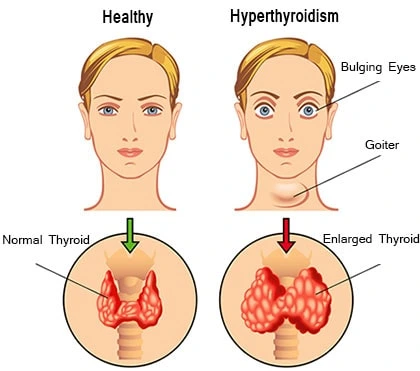
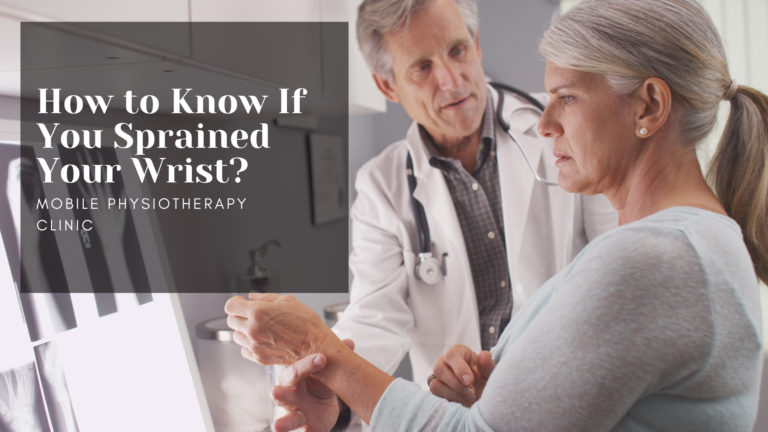
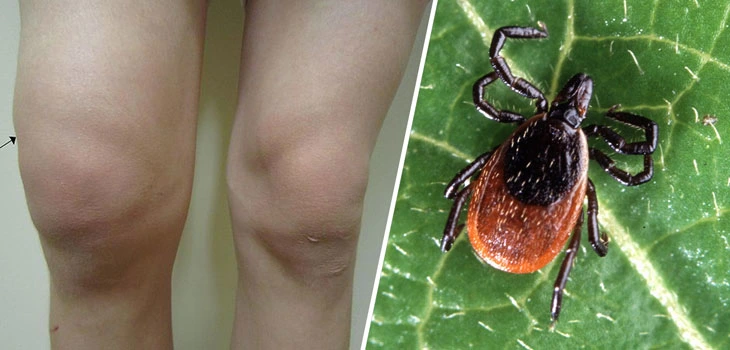
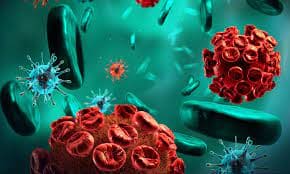
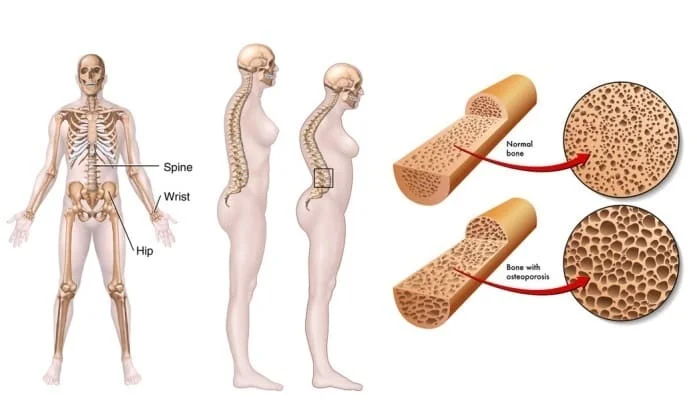
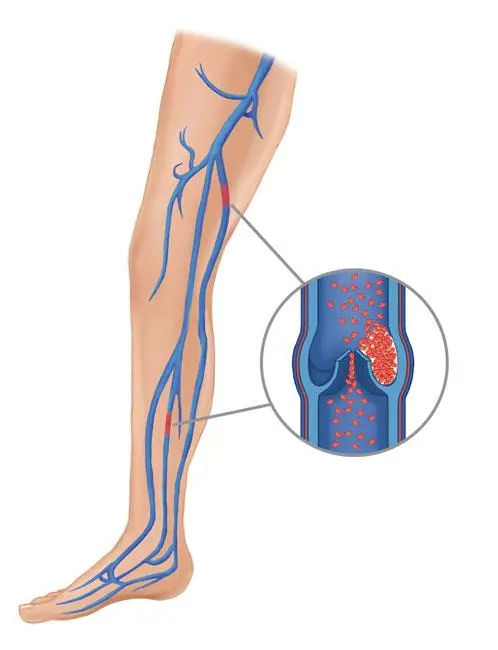
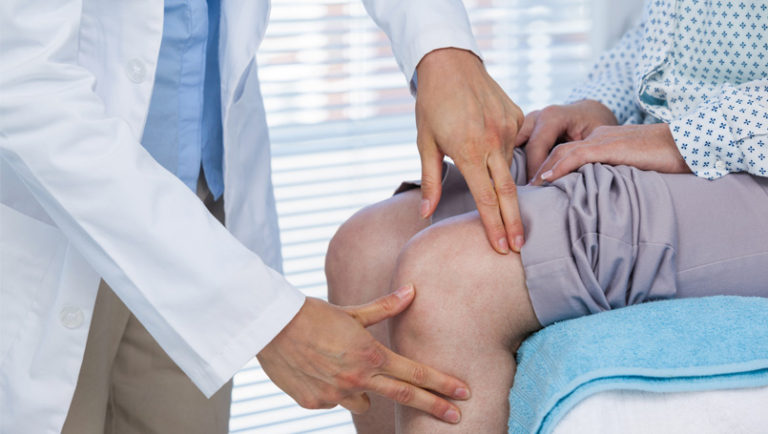
4 Comments